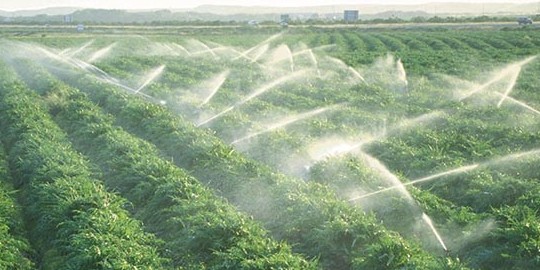The strategy of the Green Morocco Plan for a sector that contributes 19% to the national GDP, 15% in agriculture and 4% in agribusiness. This sector employs over 4 million rural and creates about 100 thousand jobs in the field of food.
This sector plays a key role in the macro-economic country. It supports a strong social support, given that the income of 80% of the 14 million rural people depend on agriculture.
Also, it is a reminder of the heavy responsibility of this sector on the food security of 30 million consumers. This demonstrates the crucial role that agriculture plays in the economic and social stability of our country.
National agriculture faces several constraints which the most important are:
Low investment
Investment in the agricultural sector is characterized by:
A low utilization of production factors. Example, fertilizer use per hectare in Morocco is four times less than in France, mechanization in Morocco is eleven times less than in Spain.
A low-participation of the banking system to finance agricultural projects with only 18% of farmers who have access to bank loans.
A Low-grant agricultural sector subsidies to Moroccan agriculture is around 8% compared to farm income against 30-70% in other countries.
A weakness of the agro-industry, which represents only 24% of the total national industrial units and transforms barely a third of the production.
Morocco it receives only 60% and 28% of tariff quotas granted by the European Union, respectively, for fresh and processed products.
Poor organization
The agricultural sector is characterized by a very low level of organization and a virtual absence of inter.
Inadequate supervision
National agriculture suffers from a traditional management of farms with inadequate management structures.
Limited water resources
Drought is one of the most important obstacles to the development of national agriculture suffering from weakness and irregular rainfall.
Undervaluation of surface water and groundwater due to irrigation system not efficient.
Land fragmentation.
Excessive fragmentation is a major constraint to the development of our agriculture, given that 70% of farms are smaller than 5 hectares.
In addition to the small size of the farm land is characterized by a multiplicity of legal regimes constituting an obstacle to investment.
The land is also characterized by a low rate of registration and registration.
Rotations dominated by cereals
Cereals occupy 75% of agricultural land (UAA), and only participate in a maximum of 10% to 15% turnover in the agricultural sector and contributes qu’concurrence 5% to 10% of employment the agricultural sector.
Faced with these constraints, Moroccan agriculture has several advantages, the most important are:
The geographical location of Morocco and its close proximity to the European market with logistics on the increase.
The presence of a national market potential and dynamic but often overlooked, which may be an important market with population growth and rising living standards.
A farm labor skilled and very competitive compared to competitors.
Proven comparative advantages for several products (fruits and vegetables, etc..)
The presence at the national level several models of agricultural and agro-industrial successful.
Taking into account the constraints and advantages mentioned above as well as success stories at national and international strategy of the Green Morocco Plan adopted as equation of success, investment and organization.




